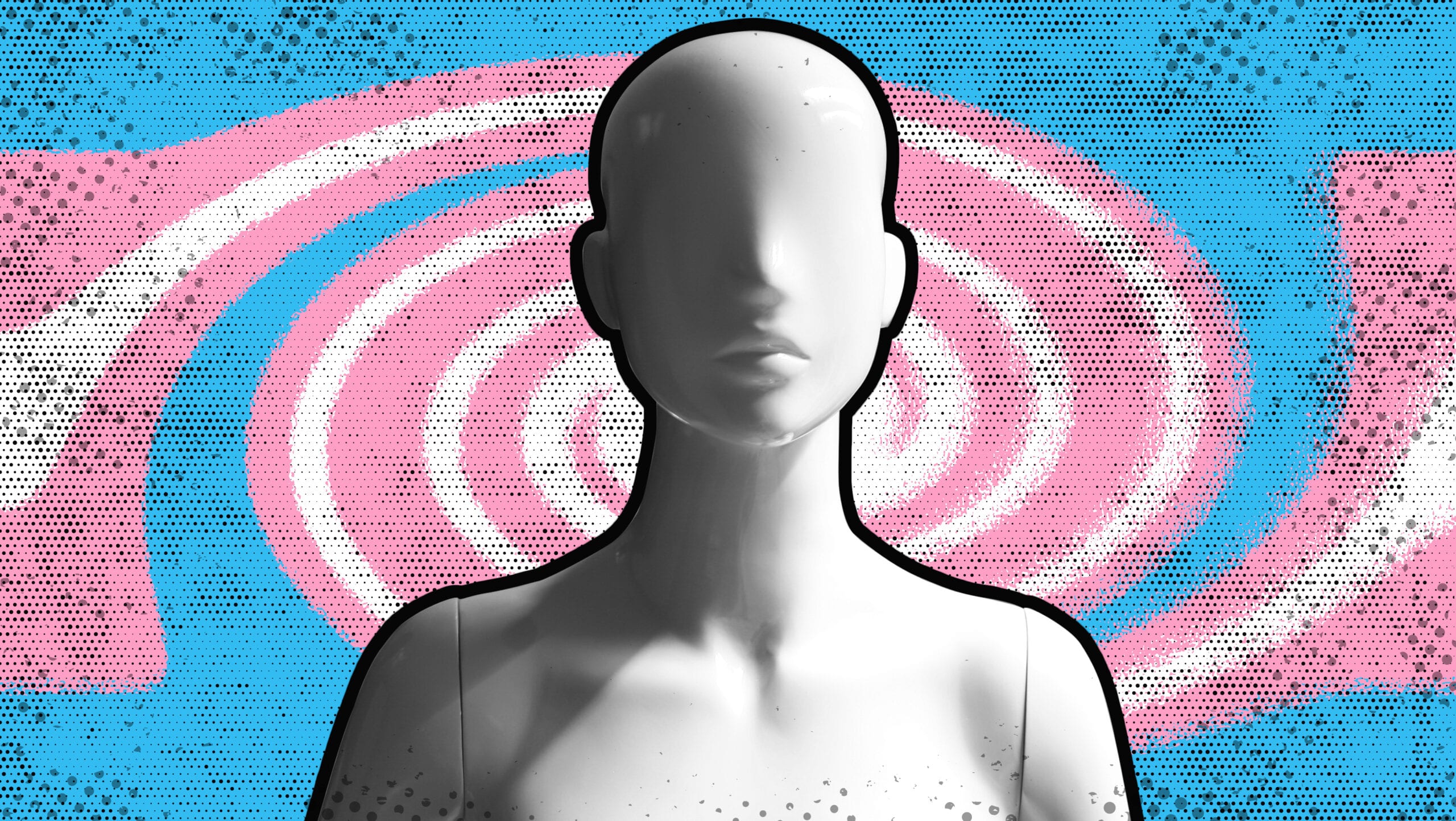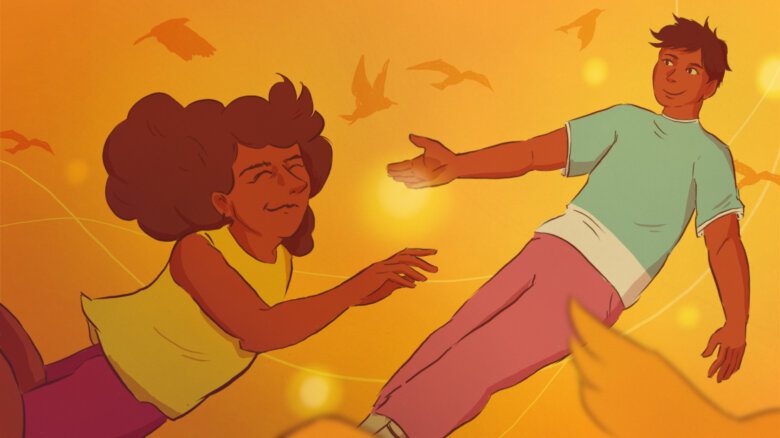In January 2018, American sex robot company Realbotix announced its intentions to produce a line of “transgender” dolls—a variation on its existing “female” dolls—with a fully functional phallic attachment. The company went as far as to say that the dolls will provide “the most enjoyable conversation and interaction you can have with a machine.” That same year, the China-based DS Doll company began selling its own “transgender” models. Not even two years later, consumers can find still more “shemale and tranny” toys and dolls online; there are now enough transgender sex dolls on the market to warrant “best-of” lists from sex toy marketing sites.
The female sex doll industry has been booming for a while now, with several “dollhouses” operating in Canada and around the world for clients who wish to rent them. (High-end dolls cost several thousand dollars and are expensive to buy for personal, exclusive use.) Toronto even received its first “sex doll brothel,” despite initial opposition from local politicians and business owners who cited municipal bylaws restricting “adult entertainment parlours.” The establishment in question has since quietly set up shop at an undisclosed new location just outside of the city—in either Mississauga or Richmond Hill, according to its secretive website. (It seems that dolls are also available for outcalls.)
The introduction of these ostensibly transgender models feels like a natural extension of this business. After all, if the incredible popularity of trans pornography is any indication, there’s endless demand for transgender sexual media—so long as the transgender women in question have pendulous breasts and massive erections (it’s not clear how transgender women with vaginas fit into this dynamic).
To some people, sex dolls are harmless toys, with strong educational potential. To others, they’re either the salve or source of violent sexual fantasies, depending on your interpretation. I see them as a symptom of an endemic, structural feature of our sexual culture where men treat women like sexual objects (an experience that some women deal with more severely than others). Because yes, sex dolls are not humans—but they’re also not just toys. A sex doll means something different than a dildo. The mere fact that there is a market for people to practice sex, including sexual violence, against something designed to resemble human women and girls must mean something.
And that anthropomorphic status is part of what makes these dolls so troubling as sexual objects. Real, living and breathing human sex workers are criminalized while these dolls are bought and sold, largely for and by men, as facsimiles of human sex workers—a community of women who are constantly misrepresented as defiled, unsalvageable, disposable, less than human. (There are, of course, many sex workers who are not women, but I think it’s fair to say that most of the worst tropes about sex workers are made with women in mind, and it’s women who bear the worst of anti-sex worker legislation). Because of this, sex workers are subjected to outrageous mistreatment and dehumanization by civilians, clients, law enforcement and policymakers, who all have some stake in imagining sex workers as outside the bounds of regular, moral life. The popular image of sex workers as deviant and dirty allows those who aren’t employed in sex work to feel normal and clean.
In a way, something similar is at work for cis people with respect to trans women. Girls like us are seen as the deviant Other—a convenient outsider. There’s an instrumental logic in seeing some people as abject, in saying, “I may be a mess, but at least I’m not like her.” And so it becomes easy to internalize the idea that trans women or sex workers—especially trans women sex workers—are simply not quite as human as everyone else; that we don’t have inner lives, unique personalities or complex ideas about ourselves and our worlds. We are dehumanized, reduced to our mere body parts and the physical sensations those parts may offer.
“It becomes easy to internalize the idea that trans women or sex workers—especially trans women sex workers—are simply not quite as human as everyone else”
So I wasn’t surprised when, about a month ago, my editor forwarded me a press release from a sex doll distributor announcing its new “transsexual” models. The release described the dolls as “empowering,” a way for “people in the LGBT community to experiment with different genders and explore their sexuality.”
I’m not unaccustomed to hearing trans women described as opportunities for sexual experimentation, but it’s still jarring. Trans women are widely and regularly depicted as a kind of perverse fetish, relegated to the world of the exotic and erotic. The message that trans women’s bodies could be analogized as anything-goes sexual playgrounds might be well-intentioned, but it reads as offensive.
Part of the appeal of sex dolls is their status as non-human: They are, literally, sexual objects, which make them fit for consumption and manipulation in a way that would be inappropriate for any real person. What made this press release so jarring, though, is how closely its language mirrors the real things I’ve encountered and heard as a trans woman in the world. It speaks to the limits of humanity afforded to women overall, and to trans women in particular.
Every once in a while, an old tweet from Kylie Jenner makes its way back onto my Twitter timeline—it reads: “Bitch with a dick. Best of both worlds.” The tweet is, everything considered, hilarious, and it’s usually trans women who reshare it. What makes it so funny is how familiar it is. When you’re used to hearing some variation of “I’ve never been with a trans before” every other day, it’s nice to be able to make light of the way trans women’s bodies are imagined among cis people—it’s all that’s keeping us from spiralling.
“This isn’t ‘empowerment’; it’s shame, wrapped up in marketing buzzwords”
While I wouldn’t claim that the popularity of MTF pornography or flippant comments like Jenner’s are indicative of some broader social blight in and of themselves, I wouldn’t dismiss the connection. As trans activist and writer Gwen Benaway has pointed out, trans women’s bodies are so often treated only as a bare assembly of parts, something to be played with—to “experiment” with sexuality and gender—but never to be loved in public. Among trans women who date cis people, it’s common to be sought after for private liaisons, but never for actual dates. Kai Cheng Thom recently tweeted about this phenomenon, suggesting that the desire to hide one’s trans woman partner is rooted in fear of the loss of privilege; to be associated with a trans woman might endanger one’s privileged status offered through being cisgender. To be “normal” is a kind of privilege, which mere proximity to trans women threatens to stain and soil.
The truth is, as journalist Harron Walker recently argued, the world largely views trans womanhood as a problem, a risk or a liability. Given that there is still a real social cost associated with being known as a trans woman, the notion of a transgender sex doll as a source of “empowerment”—presumably while being enjoyed in private, as an act of erotic deviance at the whim of whoever can afford its $3,000 average price tag—feels empty. This isn’t “empowerment”; it’s shame, wrapped up in marketing buzzwords.
I’ve lost whatever faith I used to have in “empowerment” through sexual objectification. My few brief interactions with chasers—people who specifically and doggedly pursue trans women, who have an appetite for whatever traits we all apparently share—have left a bad enough taste in my mouth (literally) to turn me off of the genre forever.
In an early episode of the podcast Nymphowars, actress and musician Theda Hammel asks her co-host, the musician Macy Rodman, if chasers are really “human beings.” Describing an endless parade of creepy dudes with identical genital obsessions, Hammel muses aloud at how this vast and disparate group of men with seemingly zero social connections to one another can all act the exact same toward trans women: sexually aggressive, single-minded, anatomically fixated, quick to profess their love yet equally quick to refuse any kind of public appearance together. The conclusion she arrives at is that chasers must all be either members of an alien species or laboratory creations.
Something about this description has stuck with me. It comes to the front of my mind whenever I’m confronted with arguments that imagine our anatomical objectification as a source of empowerment or community. In all cases, we’re talking about defining trans womanhood only in terms of our body parts, and what they can do for whoever wants to use them.
When is experimentation or fetishization not dehumanizing? And why is that experience accessible by fucking a doll with interchangeable parts, not by actually dating, sleeping with and pleasuring another person? As women, and specifically as trans women, are we supposed to be satisfied with being reduced to bare anatomy? What’s the point in humanizing the men who treat us this way, given how rarely they deign to extend us the same courtesy?
We should want more. Surely, we deserve it.


 Why you can trust Xtra
Why you can trust Xtra


